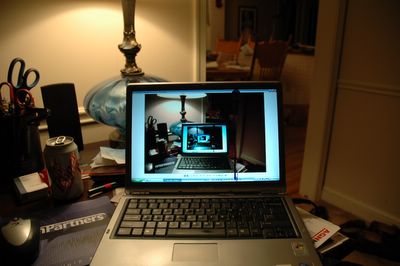Why is China kicking butt?
Why is China kicking our butt in manufacturing?
Why is it that it's hard to buy any consumer goods not made in China?
It can't just be the labor cost advantage. Labor costs are lower in the Phillipines, India, Thailand, Mynamar and a host of other countries. In addition, shipping and logistics costs offset almost 80% of the labor cost savings.
It's not just productivity. As productive as the Chinese worker is, their quality control still negatively impacts unit throughput and productivity savings.
It's not just economies of scale. Korea, Japan, Taiwan, Singapore and even Mexico are able to mass produce consumer goods in cluster communities that employ just in time logistics and other modern day manufacturing techniques.
What is the secret?
The answer is that it is not one secret. It' s several.
Secret #1 - The Nut, Part I
Not as in "you've got to be nuts to be in the manufacturing business." But rather as in overhead nut. Each business has a cost of opening the doors each day. That cost of doing business is called the "nut." The higher the nut, the higher the cost of each widget produced. The nut is comprised of taxes, regulation, property prices, insurance, legal liability and the cost of money. If the cost to produce a widget is $1.00 and the nut is 28% then a company selling widgets for $1.28 is breaking even, not making money.
Unfortunately, the nut for American manufacturers has been creeping ever upward. State and local tax rates increases have outstripped federal tax decreases in many locales. Regulation and the risk of class action has driven insurance rates through the ceiling and have themselves added to the cost of each unit of US production. In short, the nut has gone nuts.
Chinese manufacturers, by contrast, have been able to avoid much of the increased costs of operation that plague their American and European competitors. Overhead rates of 10%-15% are not unusual -- giving the Chinese manufacturer an incremental but significant advantage.
Secret #2 - The Nut, Part II
An important part of the company's overhead not mentioned above is the cost of the employees on the payroll that are not involved in the actual production of the end product. Payroll, purchasing, Accounts Payable, Accounts Receivable, Custodial, Human Resources, Sales, Marketing, Research and Development, Engineering, etcetera. All of these employees add significantly to the unit cost of a product.
The cost of this portion of overhead in China is less for three reasons.
First, the cost of labor is cheaper there than here (duh!).
Second, the Chinese don't accumulate needless FTE's to satisfy union rules, public sensibilities or from inertia. The United States and Europe, by contrast, struggle to re-train, re-orient and re-deploy personnel freed from administrative positions by technological innovation or market needs.
Finally, the Chinese are terribly stingy when it comes to "non-productive" jobs. Indeed, this is one of the frustrations of dealing with Chinese vendors. Their administration and communication can be infuriatingly inefficient.
Secret #3 - Hunger
The Chinese producer is hungry for business. Much hungrier for business than for margin. Take the garment industry (to quote Henny Youngman: "Please!"). The button and zipper manufacturer each have a margin requirement. So do the weavers and the notion makers. The margin requirement is the difference between the cost of the good (including the "nut") and the price paid by the customer. In the US, this margin normally runs between 20%-40%. So, in the example used above, the widget manufacturer who has a cost of $1.00 to make the good, a 28% overhead and a 30% margin will charge $1.82 to the wholesaler. The wholesaler in turn will charge $2.61 to the retailer, who in turn will mark it up to $3.73.
Now look at the example of a Chinese manufacturer who, because he is hungry to break into the American market and because of intense competition among other Chinese manufacturers is willing to cut his margin to 10% rather than 30%. And also assume that the Chinese companies are operating at 15% overhead. The $1.00 widget really costs $1.15 and will sell to the wholesaler for $1.27 (assuming that the labor savings are offset by shipping costs). The wholesaler will sell it to the retailer for $1.42 and the retailer will mark it up to $2.02 -- a whopping 46% less than the cost of a similarly made American product.
Secret #4 - Flexibility
American companies are notoriously inflexible in their willingness to start manufacturing a new line of products. They will plan and test and think and consider while an Chinese company will have already gone through three or four prototypes and brought a product to market. The willingness to try and fail is starkly different in the US and in China. Most Chinese companies are not burdened by Sarbanes Oxley or the pressure of quarterly SEC filings. If you show up at the factory with an idea and a napkin sketch, you can pick up a samples in a month. Try that in Europe or the US and the month will turn into a year (if you're lucky). The Chinese market is nimble in the way the tech industry was during the 1980's.
None of this is to make the case that China manufactures higher quality goods than the US - they don't. Nor do I believe that the Chinese will overtake the US in per capita GDP -- they won't. But I do believe that we are needlessly allowing many manufacturing jobs to leave these shores because of our inaction in areas such as tort reform, tax relief, regulatory reduction and transportation and logistic assistance.

